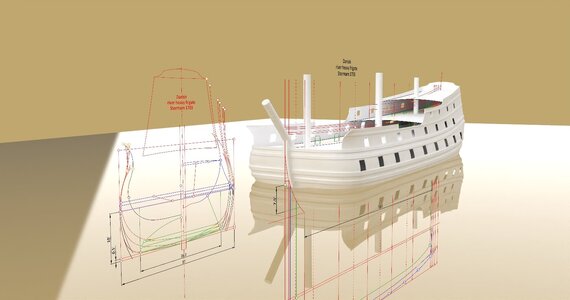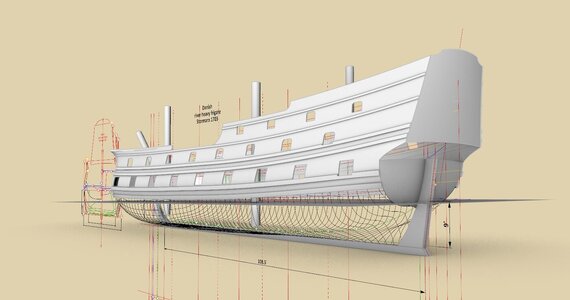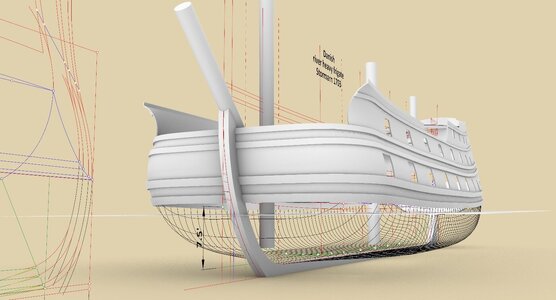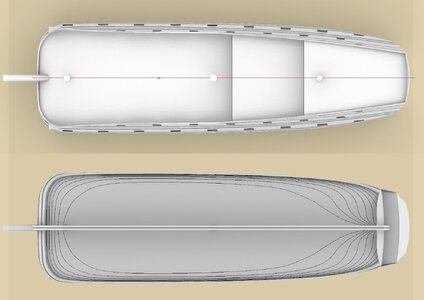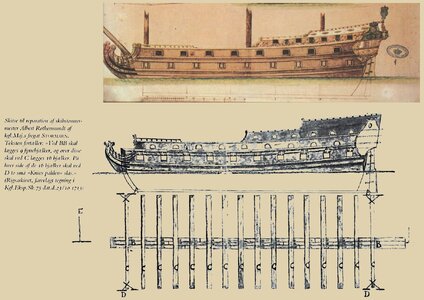.
The plan of this ship, because of its uniqueness (notably in terms of its main proportions, as well as its peculiar functions, especially since it is about such an early period), is a real gem among the constantly exploited themes, probably already in zillions of variants, such as the pirate ships, Bounty, Victory, Sovereign, Constitution, Santa Maria and a few more.
The ship in question is the Danish heavy 44-gun frigate Stormarn, built in 1703 by M. von Paulsen at Altona to protect and patrol the inland waters of the region. Due to its highly specialised characteristics, optimising the ship for inland navigation, this vessel would have been at the same time completely unsuitable for the open sea. Figuratively speaking, the project can be quite aptly compared to a war raft.
In contrast, the very concept used to design this water craft has nothing special about it, as the designer employed a perfectly typical 17th century North Continental/Dutch method of ship design, particularly suitable for such specimens of extreme proportions (notably the shallow draught combined with the considerable breadth of the vessel). This design method has already been demonstrated in my threads, including Pinas 1671 by Nicolaes Witsen – the backbone of the fleets and Samuel 1650 – a Dutch mid-17th century trader. For the sake of clarification, it may also be added that a double master frame, only recently introduced into general use, was applied in this design.
Somewhat paradoxically, however, it is this only recently recognised method of ship design that has made it possible to credibly, and fully, reproduce the hull shapes of the frigate Stormarn 1703, since the information contained in the original plan itself, due to certain elements missing from it, would not make this possible. Moreover, the original plan also contains some errors and inaccuracies that would make the commonly applied today method of iteratively adjusting waterlines, buttock lines and cross-section lines (hopelessly inappropriate for this period by the way), to only lead a potential redesigner astray, that is, it would only generate some fancy hull shape.
Below is a reproduction of the original plan of this exquisitely interesting vessel (Danish archives), as well as some renders, showing visually the rather unusual nature of the shapes for a heavy 44-gun frigate.
.
Last edited:



